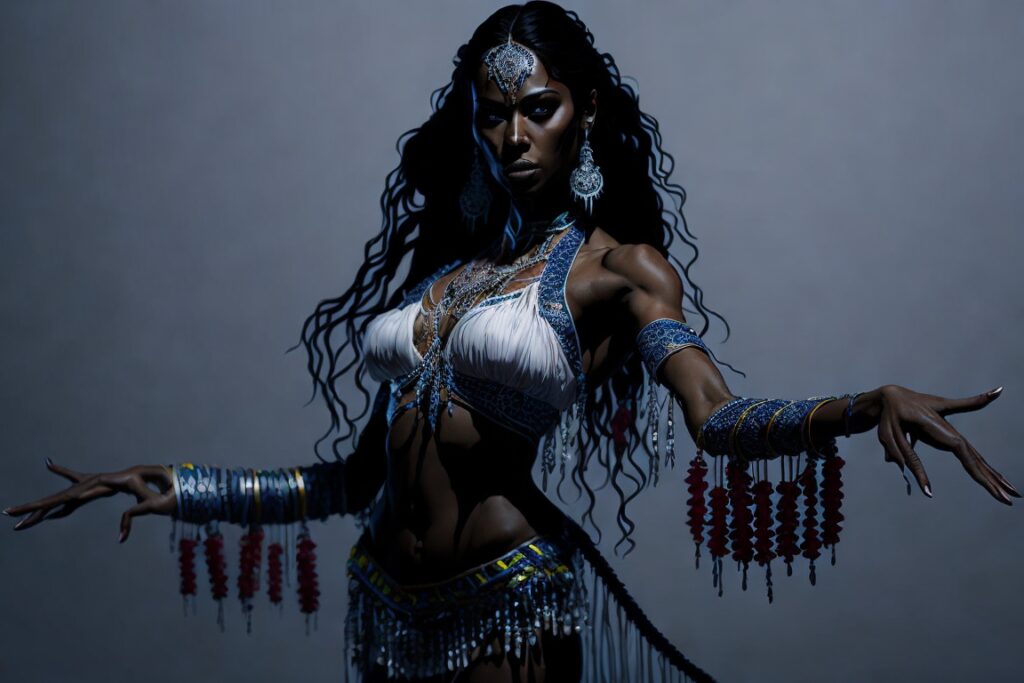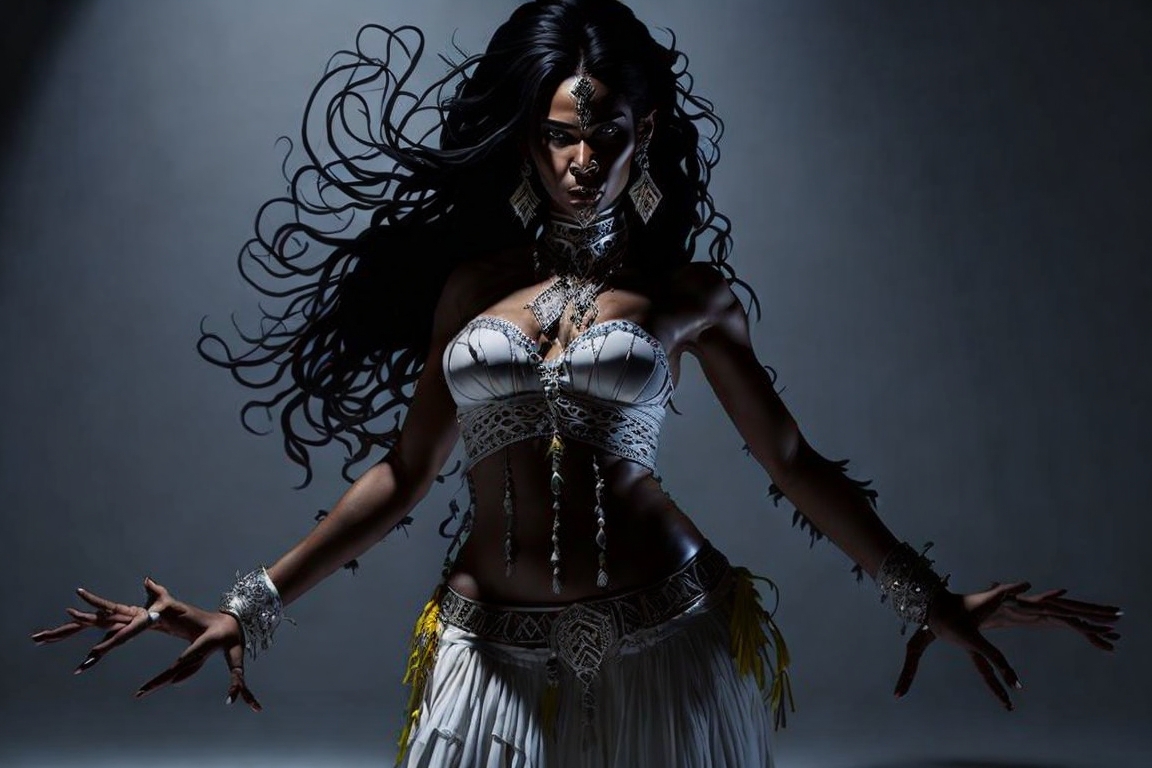| Section | Key Points |
|---|---|
| What to Eat Before Dancing | Eat light, balanced meals 2-4 hours before. Hydrate well in advance Avoid heavy foods, fiber, and sugars Have a light protein snack 30-60 min before |
| What to Eat After Dancing | Replenish fluids and electrolytes Eat a balanced meal within 60 min Consume proteins for muscle repair Reduce inflammation with fruit and cold therapy |
| Top Foods for Dancers | Complex carbs for energy Lean proteins to build muscle Healthy fats to reduce soreness Leafy greens for vitamins and minerals |
| Foods to Avoid | Fried and greasy foods Carbonated beverages Dairy Cruciferous vegetables |
| Helpful Supplements | Protein powder BCAAs Omega-3s Electrolytes |
What should you eat before belly dancing?

Eating well-balanced meals with the right nutrients before dancing gives you the energy to perform your best. Here are 10 tips for optimal pre-belly dance nutrition:
Eat 2-4 hours before dancing to allow for digestion. Aim for a mix of clean proteins, complex carbs and healthy fats. Some good pre-dance foods include oatmeal with fruit, yogurt with granola, eggs with vegetables, chicken or fish with sweet potato and greens. Snack on nuts, nut butters, or hummus with veggies for easily digestible protein closer to class.
Stay hydrated leading up to class by sipping water steadily. Dehydration hinders stamina, so drink consistently starting the day before.
Choose natural, whole foods over processed snacks. Proper nutrients from produce, lean proteins and whole grains fuel your body optimally.
Avoid heavy, fatty meals right before dancing. Foods high in fat, oil or grease take longer to digest and may cause nausea or cramping.
Reduce high-fiber veggies, beans and cruciferous vegetables a few hours pre-class to prevent bloating or gas during dancing.
Limit simple sugars and refined carbs which spike then crash blood sugar before dancing. Opt for complex carbs like brown rice, sweet potato and quinoa instead.
Stop eating 2-3 hours pre-class. Allow your body to complete digestion and avoid dancing on a full stomach.
Eat a light protein snack 30-60 minutes pre-class if you need an energy boost or are performing soon after. Try Greek yogurt, cottage cheese, nuts or a hard boiled egg.
Stay satiated but don’t overeat. Comfortably full but not stuffed is ideal. Portion well at main meals.
Listen to your body. Notice which foods provide or sap your energy, then plan pre-dance meals accordingly.
What should you eat after dancing?
Replenishing the body with the right nutrients after dancing aids recovery. Here are 10 tips for ideal post-belly dance nutrition:
Rehydrate immediately by drinking water or electrolyte drinks like coconut water. Restore fluids lost through sweat.
Eat a balanced meal within 30-60 minutes. Include clean protein to repair muscle, carbs to refuel glycogen stores, veggies for vitamins. Grilled chicken, brown rice and broccoli is a great option.
Consume easily digestible proteins like Greek yogurt, cottage cheese, eggs or protein shakes to optimize muscle repair. Sprinkle nuts for healthy fats too.
Enjoy antioxidant-rich fruits like berries which reduce inflammation. Pineapple and tart cherry juice also help soothe muscles.
Refrain from alcohol, processed foods and sugary treats. They impede recovery.
Drink chocolate milk. The carb to protein ratio quickly restores energy and supports muscle healing.
Have anti-inflammatory teas like green tea, turmeric tea or ginger tea. The compounds reduce swelling and joint pain.
Take an ice bath or use ice packs on sore areas. Applying cold therapy aids healing.
Get quality sleep. Growth hormone released during deep sleep speeds muscle repair.
Listen to your body. Eat until satisfied but not overly full. Hydrate until urine is light yellow.
What foods fuel belly dancers?
Certain foods provide key nutrients belly dancers need to optimize energy, strength and recovery. Here are 10 optimal belly dance fuels:
Complex carbs like sweet potatoes, quinoa, oats and brown rice give steady energy for endurance. They are digested slowly and stabilize blood sugar.
Lean proteins like chicken, fish, eggs, Greek yogurt and cottage cheese build and repair muscle. Combine them with veggies or complex carbs.
Healthy fats from avocado, nuts, seeds, olive oil and salmon reduce inflammation and muscle soreness while providing energy.
Leafy greens offer vitamins and minerals like magnesium and potassium which support muscle function and nerve transmission.
Berries contain antioxidants that combat inflammation and oxidative damage from exertion.
Bananas pack potassium to prevent muscle cramps and charley horses. The simple carbs replenish glycogen.
Chia seeds and flaxseeds deliver omega-3s to reduce joint pain and aid recovery. Sprinkle them on yogurt or salads.
Beans and lentils provide plant-based protein, fiber for digestion, and iron for oxygen circulation in the blood.
Herbal teas like turmeric, green and ginger tea reduce swelling and soothe abdominals and hips after dancing.
Water and electrolyte drinks keep the body hydrated for peak performance. Aim for 80-100 oz of water daily.
What should belly dancers avoid eating?

Some foods can hinder belly dancers‘ energy and cause discomfort when dancing. Here are 10 foods belly dancers should limit:
Fried and greasy foods take longer to digest and may cause nausea, cramping or sluggishness while dancing.
Carbonated beverages and alcohol can cause bloating and stomach discomfort during movement. They also dehydrate.
Dairy is difficult to digest fully and may cause gas or abdominal pains, especially for lactose intolerant dancers.
Cruciferous vegetables like cabbage, broccoli and Brussels sprouts may contribute to bloating or gas while dancing. Eat them sparingly.
Beans and lentils, while healthy overall, can cause gas. Limit intake before dancing.
High fiber foods like raw veggies, bran and popcorn take longer to digest. Moderate portions before class.
Spicy foods may cause heartburn or stomach distress during rigorous dance. Avoid them pre-class.
Processed snack foods like chips, candy and cookies offer little nutrition. They also spike then crash blood sugar.
Caffeine is dehydrating and the crash can zap energy. Limit coffee and tea intake on dance days.
Overeating slows digestion, causing discomfort. Eat until satisfied but not stuffed before dancing.
What supplements support belly dance performance?
Some targeted supplements complement a healthy diet to give belly dancers an added edge. Here are 10 supplements dancers can consider:
Whey or plant-based protein powders help build and repair muscle after long practices or performances.
Creatine boosts power and energy production in muscles. It aids endurance for intensive shows.
BCAAs (branched chain amino acids) reduce muscle soreness and fatigue between sets or extended routines.
Omega-3 supplements decrease inflammation and joint pain to support graceful movements.
Electrolyte tablets and powders like Nuun replenish sweat loss and prevent cramps.
Iron supplements prevent deficiency contributing to low energy and endurance for high cardio dance.
Probiotics ease digestion, help absorb nutrients, and prevent stomach issues during rigorous movement.
Vitamin D optimizes bone health, immunity and mood, especially if indoor rehearsing limits sun exposure.
Collagen protein aids joint and bone support for high impact dance.
Consider a multivitamin to fill any nutritional gaps that heavy training demands cannot meet through diet alone.
Belly Dance Nutrition FAQs
What should I eat for dinner before a belly dance class?
Aim for a balanced meal with protein, complex carbs, and veggies 2-4 hours pre-class. Good options include grilled chicken and vegetables, salmon with sweet potato and greens, or turkey tacos with brown rice.
How much water should I drink while dancing?
Stay well hydrated by sipping 4-6 oz of water every 15-20 minutes while dancing. Have electrolyte drinks too for longer practices. Hydration is key for energy and stamina.
Will eating dairy cause problems when belly dancing?
Dairy is difficult for some to fully digest and may cause abdominal discomfort, bloating or gas while dancing vigorously. Limit dairy before class or choose plant-based options.
What foods help reduce muscle soreness after dancing?
Eat plenty of antioxidant and anti-inflammatory foods like berries, pineapple, leafy greens, salmon, avocados and turmeric to ease post-dance muscle soreness. Tart cherry juice is great too.
Should I take supplements if I dance 4-5 days a week?
Some supplements like protein powder, BCAAs, omega-3s and a multivitamin can complement a healthy diet for dancers training intensively multiple days per week. Check with your doctor.
How soon after dancing should I eat my recovery meal?
Aim to eat a balanced recovery meal containing carbs, protein and antioxidants within 30-60 minutes after finishing dancing. This optimizes replenishment and muscle repair.
What pre-dance snacks boost energy without upsetting my stomach?
Try a banana with nut butter, apple with cheese, trail mix, Greek yogurt, cottage cheese, or a hard boiled egg 30-60 minutes before dancing for easily digestible protein and carbs.
